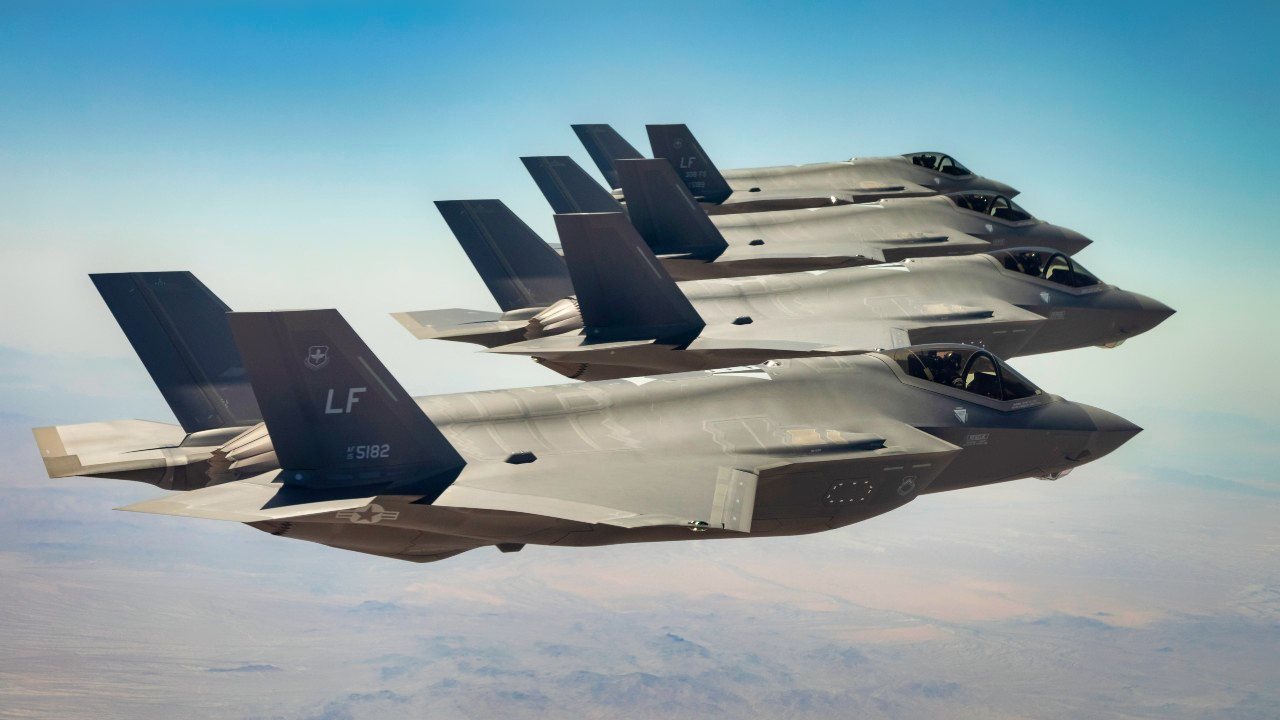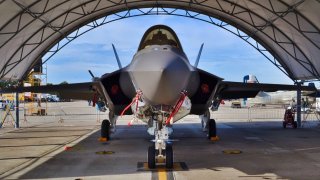F-35: The Fighter Jet Every Air Force Wants (But with Flaws)
The F-35 Lightning II, a fifth-generation multirole fighter, has three versions: the conventional F-35A, the short take-off and vertical landing F-35B, and the carrier-capable F-35C.
Summary: The F-35 Lightning II, a fifth-generation multirole fighter, has three versions: the conventional F-35A, the short take-off and vertical landing F-35B, and the carrier-capable F-35C. Each model is tailored for specific operational environments but shares core capabilities across strategic attack, air superiority, and more.
-Despite its advanced features, the F-35 program faces challenges with slow production and delivery rates.
-Over 980 units have been delivered to 17 countries, but with a production target falling short and ongoing delays in software and hardware updates, the queue of nations awaiting these jets, including Greece and Romania, continues to grow.
F-35 Lightning II: Unveiling the Capabilities and Challenges of the World's Most Advanced Fighter
The F-35 Lighting II is the most advanced fighter jet in the skies today. An aircraft that can do many things at the same time, the F-35 is highly sought after by many nations.
However, the 5th generation fighter plane is far from perfect.
A Diverse, Powerful Aircraft
There are three versions of the F-35 Lighting II: the F-35A, F-35B, and F-35C.
To begin with, the “A” is the standard, conventional version of the aircraft. It can take off from and land on a regular runway. The “B” iteration is the short take-off and vertical landing (STOVL) model that is designed to take-off and land vertically much like a helicopter. Finally, the “C” version is designed to operate from aircraft carriers.
Although each has its own use and particular characteristics, they share the same overall capabilities and technologies. Their main difference is in their launch and recovery characteristics.
For example, because of its special take-off and landing equipment, the F-35B can take less fuel than its sister versions. Similarly, because it is designed to operate over water, the F-35C can carry more fuel than the “A” or “B” models. The F-35A has the most room available and thus packs an internal gun (a four-barrel 25mm Gatling gun with 220 rounds) for dogfighting or close air support missions.
All three versions of the fighter jets can conduct six mission sets: Strategic Attack, Air Superiority, Close Air Support, Electronic Warfare, Intelligence, Surveillance, and Reconnaissance (ISR), Suppression of Enemy Air Defenses (SEAD), and Destruction Enemy Air Defense (DEAD).
A Popular Aircraft with Slow Deliveries
As of December, more than 980 F-35s have been delivered. In total, 17 countries have officially entered the program. However, slow deliveries are complicating things.
Take for example, Greece. The southern European NATO member is looking to bolster its air deterrence by adding between one and two squadrons of F-35A Lighting II fighter jets, that is, from 24 to 48 stealth aircraft. Athens is finalizing the necessary documentation to formally ask the United States and Lockheed Martin to enter into the F-35 Joint Strike Fighter program.
However, with several countries already waiting in queue for their deliveries, the Hellenic Air Force won’t receive its first F-35 fighter jets until 2027 or 2028. And it would be only a few aircraft, with the full order expected to be ready in the early 2030s.

Six other countries are in line to get the F-35 before Greece. Poland, Switzerland, Canada, Germany, Finland, and the Czech Republic have finalized agreements with the U.S. and Lockheed Martin and have formally begun the process of incorporating the stealth fighter jet in their arsenal. Delivery dates for these countries range from 2025 to the early 2030s.
Meanwhile, Romania has also expressed its intention to procure a total of 48 F-35A Lighting IIs and should be sending a formal request in early 2024.
Two years ago, Lockheed Martin declared a long-term goal to produce 156 F-35 stealth fighter jets a year. But in 2022, it delivered 141, and in 2023, 97. In 2024, it plans to produce about 110. Delays in TR-3 and Block 4 software and hardware updates are causing Lockheed Martin to delay delivery of manufactured aircraft to eagerly waiting customers. The backlog is close to 60 aircraft, and if delays with the updates continue, the backlog is likely to grow bigger.
About the Author
Stavros Atlamazoglou is a seasoned defense journalist specializing in special operations and a Hellenic Army veteran (national service with the 575th Marine Battalion and Army HQ). He holds a BA from the Johns Hopkins University and an MA from the Johns Hopkins’ School of Advanced International Studies (SAIS). His work has been featured in Business Insider, Sandboxx, and SOFREP.
All images are from Shutterstock.


